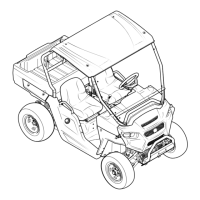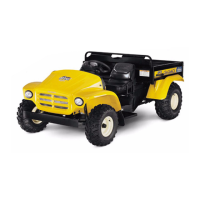Troubleshooting
•
Valve train noise—Check for the following:
1)
Excessive valve clearance.
2)
Worn or damaged camshaft.
3)
Damaged camshaft.
4)
Worn or damaged valve train components.
5)
Damaged valve lifter bore(s).
6)
Valve sticking in guide.
7)
Broken valve spring.
8)
Low oil pressure.
9)
Clogged cylinder oil hole or oil passage.
CYLINDER LEAK DOWN TEST
A cylinder leak down test can accurately pinpoint engine leakage problems from the
head gasket, water jackets in the cylinder head and cylinder, valves and valve seats,
and piston rings. This test is performed by applying compressed air to the cylinder
through a special tester and then measuring the percent of leakage. A cylinder leak
down tester and an air compressor are needed to perform this test.
When performing a leak down test, the engine is first set at TDC on its compression
stroke so that all the valves are closed. When the combustion chamber is pressurized,
very little air should escape. However, the difficulty in performing a leak down test on a
single cylinder engine (especially on the engines described in this manual with low static
engine compression) is in preventing the piston from moving as the combustion
chamber starts to pressurize. Any piston movement will force the crankshaft to turn
away from TDC and allow air to escape past an open valve seat. In this procedure it will
be necessary to lock the engine at TDC on its compression stroke and then perform the
leak down test. Follow the manufacturer’s directions along with the following information
when performing a cylinder leak down test.
•
Support the UV on a work stand with the rear wheels off the ground.
•
Remove the air filter assembly Open and secure the throttle so it is at its wide-
open position.
•
Remove the sparkplug.
•
Install the threaded hose adapter from the leak down kit. Then install the leak
down gauge onto the hose.
•
Remove the ignition timing hole cap from the left crankcase cover.
•
Remove the crankshaft hole cap from the right crankcase cover.
•
Remove the fan housing and fan from the right side of the engine.
Note:
Because the following test is performed with the cylinder head cover installed on
the engine, the camshaft lobes cannot be viewed to ensure that the engine is
positioned at TDC on its compression stroke. To determine when the engine is
approaching TDC on its compression stroke, or whether it is 360°off. Observe the
following two indicators to predict engine position. First, when aligning the index

